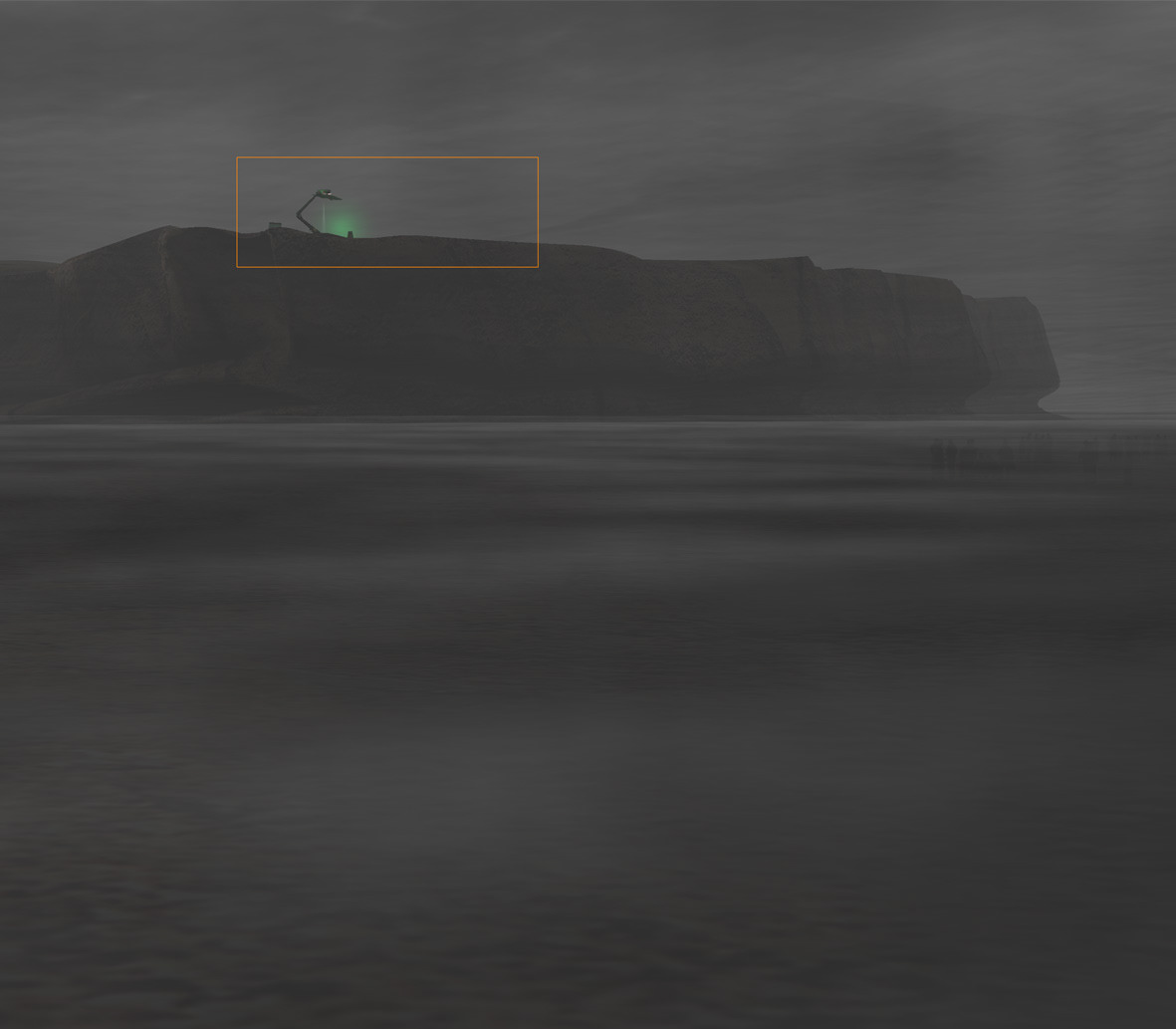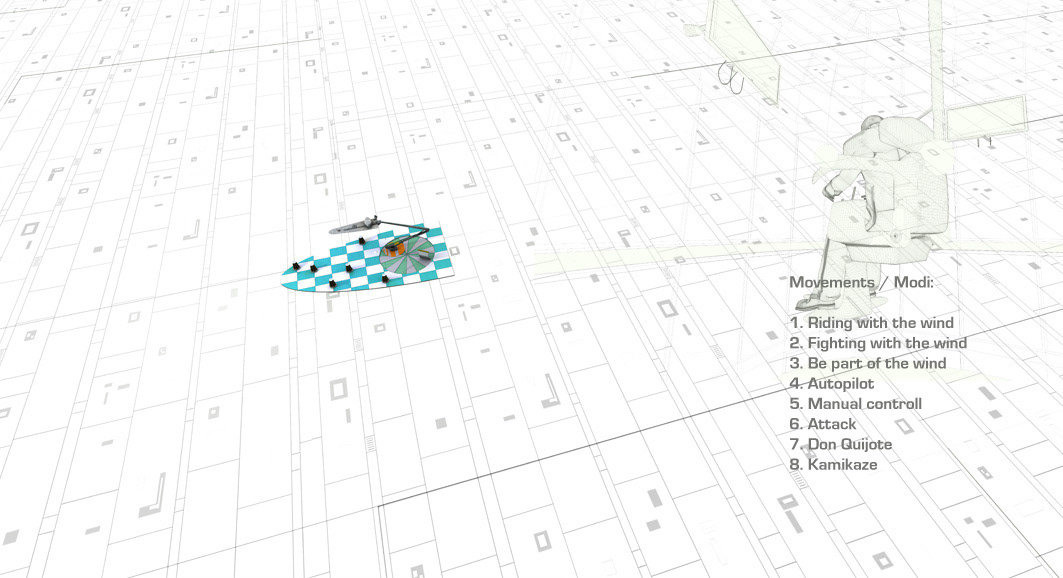House of the winds
Haus der Winde
Project 1994
Haus der Winde
Project 1994

House of the Winds
Story
At a windy and lonely place, a former Japanese pilot brings his dream into being:
A house that is in almost constant motion, manually controlled and/or wind driven. Closer to a dancer or a leaf in the wind than to a house.
Function
By means of changes to various parameters (wind, atmospheric conditions, light, etc.) the modes of movement can be influenced.
Moreover, this routine can be temporarily transposed to manual control by switching the automatic pilot off.
The lifting arm is mounted on the ground on two discs that rotate independently of each other.
The vertical windmills are continually and automatically realigned according to the direction and speed of the wind so as to find the best possible position.
A wind sail on the ground acts as a passive wind catch and enhances the possibilities of movement.
Energy
Energy is derived completely from 29 solar cell units and 5 wind generators shaped like truncated cones.
If needed, heat gained from a geothermal heat pump can also be used to generate electricity.
The limited capacity of the storage batteries results in temporary motionlessness of the unit. Before the battery cycle comes to an end, the HoW (House of the Winds) is gently lowered to the ground where it remains until the batteries are recharged.
A power unit driven by airplane fuel serves as a reserve.
Sound
According to the wind speed, each windmill generates a tone that is abstractly derived from the tonal scale. The result is a composition that only the wind can influence.
All indispensable equipment and the controls are located within the living unit.
Story
At a windy and lonely place, a former Japanese pilot brings his dream into being:
A house that is in almost constant motion, manually controlled and/or wind driven. Closer to a dancer or a leaf in the wind than to a house.
Function
By means of changes to various parameters (wind, atmospheric conditions, light, etc.) the modes of movement can be influenced.
Moreover, this routine can be temporarily transposed to manual control by switching the automatic pilot off.
The lifting arm is mounted on the ground on two discs that rotate independently of each other.
The vertical windmills are continually and automatically realigned according to the direction and speed of the wind so as to find the best possible position.
A wind sail on the ground acts as a passive wind catch and enhances the possibilities of movement.
Energy
Energy is derived completely from 29 solar cell units and 5 wind generators shaped like truncated cones.
If needed, heat gained from a geothermal heat pump can also be used to generate electricity.
The limited capacity of the storage batteries results in temporary motionlessness of the unit. Before the battery cycle comes to an end, the HoW (House of the Winds) is gently lowered to the ground where it remains until the batteries are recharged.
A power unit driven by airplane fuel serves as a reserve.
Sound
According to the wind speed, each windmill generates a tone that is abstractly derived from the tonal scale. The result is a composition that only the wind can influence.
All indispensable equipment and the controls are located within the living unit.











